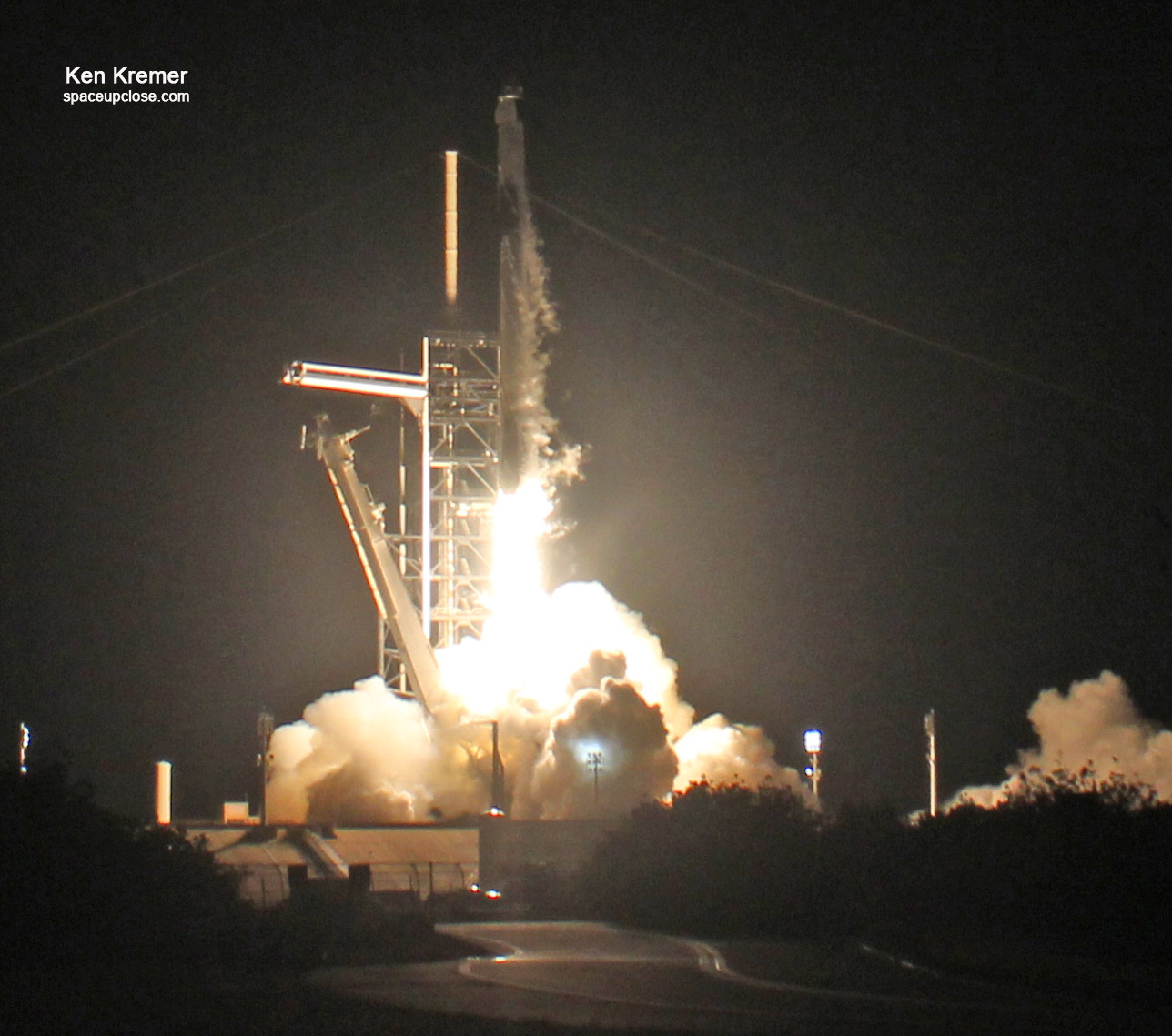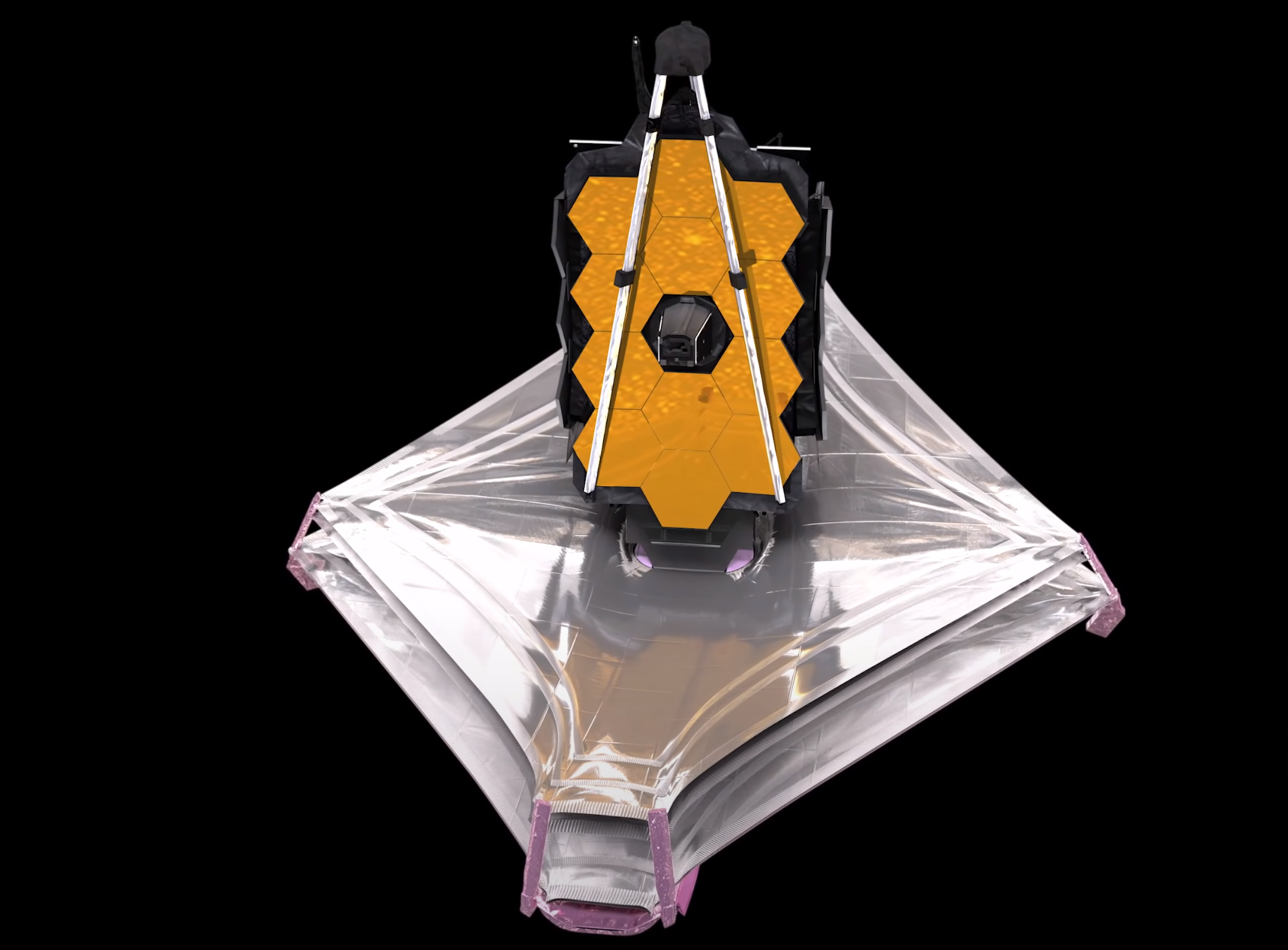
For SpaceUpClose.com & RocketSTEM
CAPE CANAVERAL, FL – Mission controllers with NASA’s James Webb Space Telescope (JWST) have successfully completed the deployment, separation and tensioning of the observatory’s massive five-layered sunshield to pull them completely taut into final operational position on Tuesday, Jan. 4 – which is considered as the most riskiest of actions of the telescopes entire month-long extremely complicated unfolding sequence following the Christmas morning launch, Dec. 25, 2021, a week and a half ago.
This final sunshield deployment sets the stage for the next critical activity namely deployment of the telescopes secondary and primary mirrors starting tomorrow, Wed. Jan. 5.
“The James Webb Space Telescope team has fully deployed the spacecraft’s 70-foot sunshield, a key milestone in preparing it for science operations,” NASA confirmed around noontime Tuesday – translating to about 75% of the single point failure deployment risk thereby being passed and retired.
“At approximately 11:59 a.m. EST Tuesday, the sunshield was fully tensioned and secured into position, marking the completion of the sunshield deployment”
The five-layer, tennis court-sized sunshield is essential for protecting the telescope from heat, allowing Webb’s instruments to cool down to the extremely low temperatures of approximately minus 388 degrees Fahrenheit (minus 233 degrees Celsius), or 40K degrees above absolute zero necessary to carry out its science goals.
“With all five layers of sunshield tensioning complete, about 75% of our 344 single-point failures have been retired!”
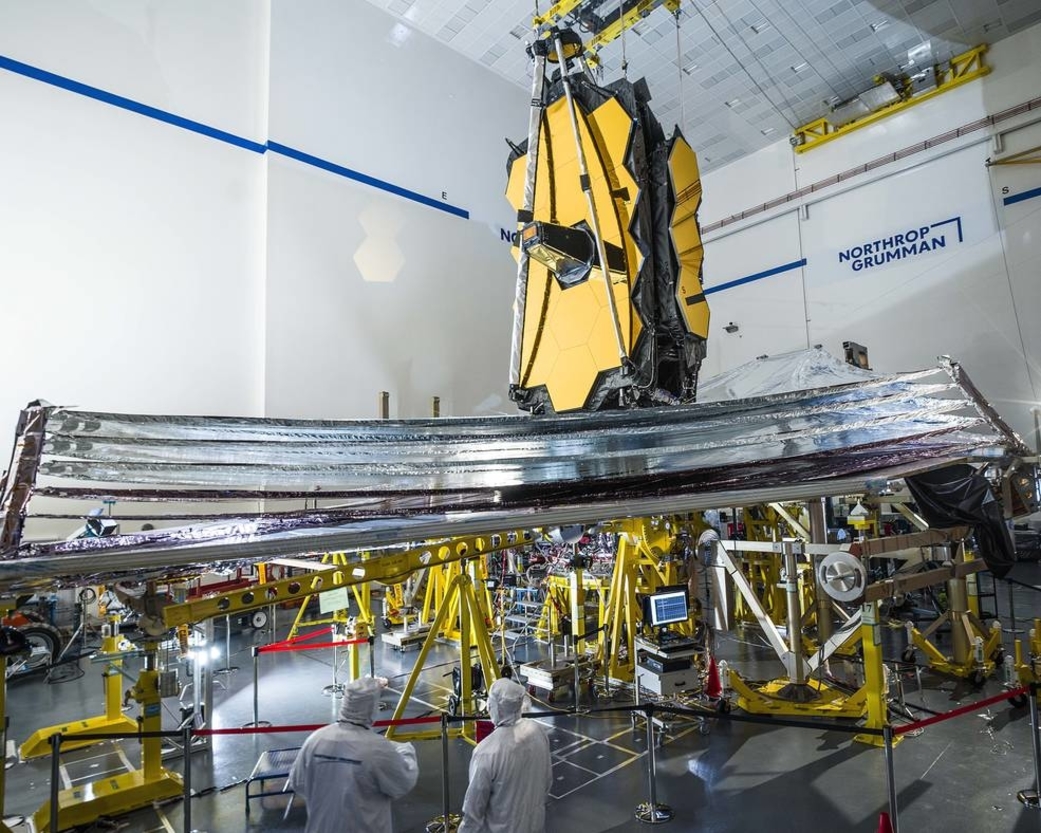
After first fully unfurling all five layers of the diamond-shaped sunshield on New Year’s Eve Friday evening. Dec. 31 via the left and right-side mid-booms the team spent two days to separate and tension the five layered structure so that it can function as designed to cool the telescope.
The sunshield – about the size of a tennis court at full size – was folded to fit origami-style inside the payload area of the Arianespace Ariane 5 carrier rocket’s nose cone prior to launch.
“This is the first time anyone has ever attempted to put a telescope this large into space,” said Thomas Zurbuchen, associate administrator for NASA’s Science Mission Directorate at the agency’s headquarters in Washington.
“Webb required not only careful assembly but also careful deployments. The success of its most challenging deployment – the sunshield – is an incredible testament to the human ingenuity and engineering skill that will enable Webb to accomplish its science goals.”
Shields up! @NASAWebb has completed the tensioning of its tennis-court-size sunshield.
This five-layered shade will protect the telescope from the heat of the Sun, Earth and Moon, helping it #UnfoldTheUniverse in infrared light. Details & next steps: https://t.co/m9eFc0ysib pic.twitter.com/qF1UQV3cIY
— NASA (@NASA) January 4, 2022
Webb is a robotic mission and will function as a cosmic time machine peering back to nearly the beginning of time to see first light and explore the formation of the first stars and galaxies in our Universe in infrared light.
The Webb team began the multi-day and multi-step process to remotely deploy the sunshield Dec. 28, 2021, three days after launch in one of the most nail-biting operations of the entire high-stakes month long deployment sequence while voyaging underway to its final operational destination at a unique orbital perch at the L2 Lagrange point a million miles (1.5 million km) from the Home Planet.
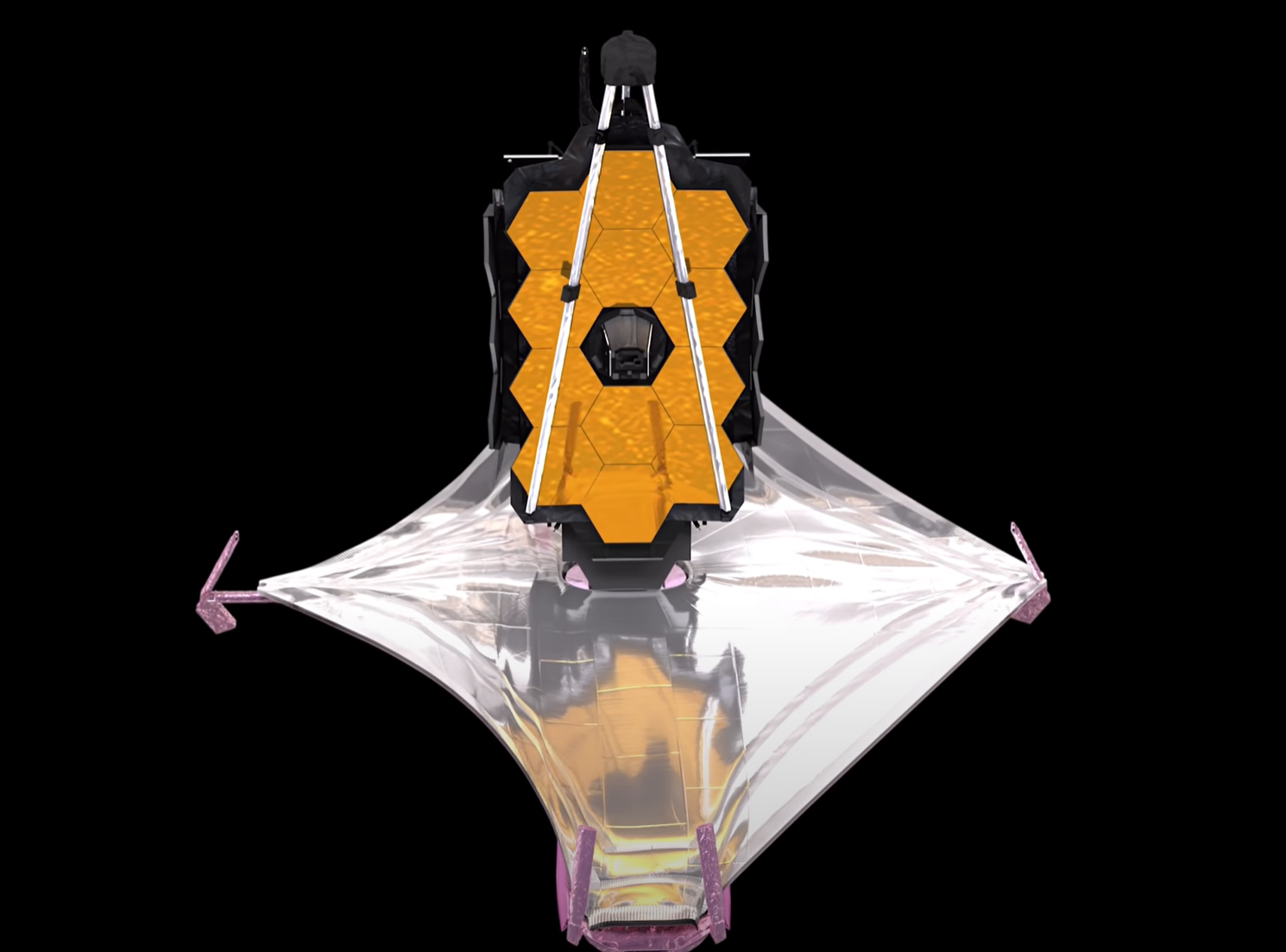
Bottom line is everything continues to progress really great (or nominal) for Webb’s critical deployments as we step through week one of in the New Year – so far so good for the first of its kind $10 Billion observatory over two decades in the making!
“This is a huge deal!” tweeted Zurbuchen. Congratulations to the @NASAWebb team and partners. We have a fully tensioned sunshield! Learn how this will help Webb #UnfoldTheUniverse”
This is a huge deal! Congratulations to the @NASAWebb team and partners. We have a fully tensioned sunshield! Learn how this will help Webb #UnfoldTheUniverse: https://t.co/dnfiVlOOHJ https://t.co/1V9VWkSd4x
— Thomas Zurbuchen (@Dr_ThomasZ) January 4, 2022
Three sunshield layers were separated and tensioned on Monday and the last two on Tuesday – much of it carried live on NASA TV!
— NASA Webb Telescope (@NASAWebb) January 4, 2022
This NASA video shows what the separation and tension looked like during prelaunch ground testing:
Listen in as @NASAWebb experts give an update following today’s successful deployment of the 5-layer, tennis-court-size sunshield in space: https://t.co/Bl5VHPN1dW
~75% of 344 potential single-point failures are now behind us on the telescope's journey to #UnfoldTheUniverse. pic.twitter.com/DRCFYD2cFc
— NASA (@NASA) January 4, 2022
The first layer is the largest of the five “and will experience the brunt of the heat from the Sun.”
Today we start tensioning the most Sun-facing layer of #NASAWebb's 5-layer, tennis court-sized sunshield. Read in depth how our sunshield works ➡️ https://t.co/cKIC6Qkz2r
More about tensioning activities: https://t.co/mBz8I4RGgF #UnfoldTheUniverse pic.twitter.com/kNB4O7TTv0
— NASA Webb Telescope (@NASAWebb) January 3, 2022
“Onions have layers. Ogres have layers.” And so does our sunshield!
Layer 1 of our 5-layer sunshield is now pulled taut, getting us even closer on our journey to #UnfoldTheUniverse. We have begun tensioning Layer 2: https://t.co/9YBPSe36OC pic.twitter.com/0LKHIZpKDS
— NASA Webb Telescope (@NASAWebb) January 3, 2022
The sunshield will allow the telescope to cool down to a temperature below 50 Kelvin (-370°F, or -223°C) by passively radiating its heat into space. The near-infrared instruments (NIRCam, NIRSpec, FGS/NIRISS) will work at about 39 K (-389°F, -234°C) through a passive cooling system. The mid-infrared instrument (MIRI) will work at a temperature of 7 K (-447°F, -266°C), using a helium refrigerator, or cryocooler system, according to NASA.
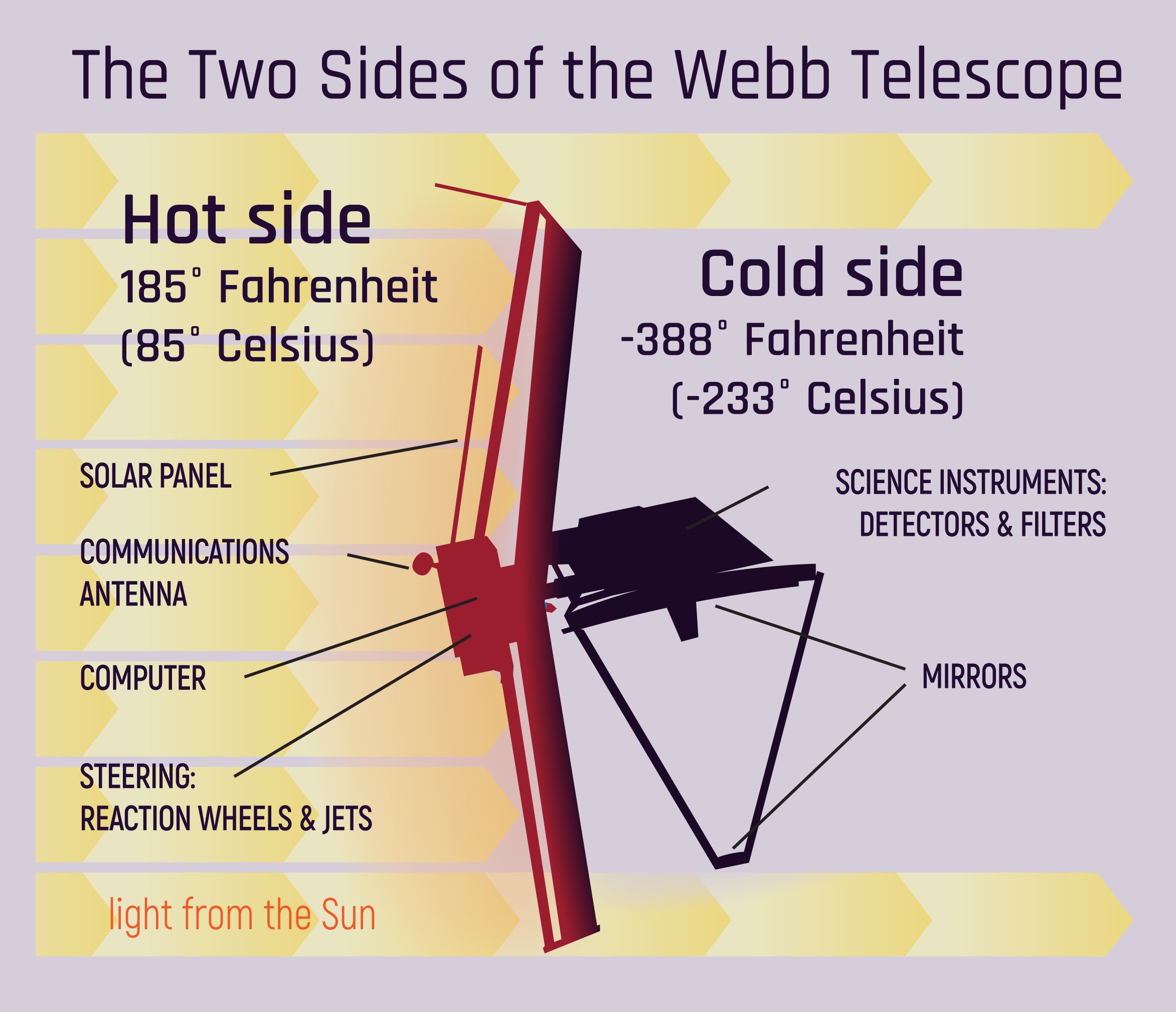
The enormous tennis court sized sunshield is shaped like a diamond and measures about 47 feet across and 70 feet long (14 by 21 meters) when fully deployed.
The five-layered sunshield will protect the telescope from the light and heat of the Sun, Earth, and Moon.
Each plastic sheet is about as thin as a human hair and coated with reflective metal, providing protection on the order of more than SPF 1 million. Together, the five layers reduce exposure from the Sun from over 200 kilowatts of solar energy to a fraction of a watt, according to NASA.
This protection is crucial to keep Webb’s scientific instruments at temperatures of 40 kelvins, or under minus 380 degrees Fahrenheit – cold enough to see the faint infrared light that Webb seeks to observe.
It will take several weeks to months to completely cool the telescope structure to its operating temperature
“Unfolding Webb’s sunshield in space is an incredible milestone, crucial to the success of the mission,” said Gregory L. Robinson, Webb’s program director at NASA Headquarters. “Thousands of parts had to work with precision for this marvel of engineering to fully unfurl. The team has accomplished an audacious feat with the complexity of this deployment – one of the boldest undertakings yet for Webb.”
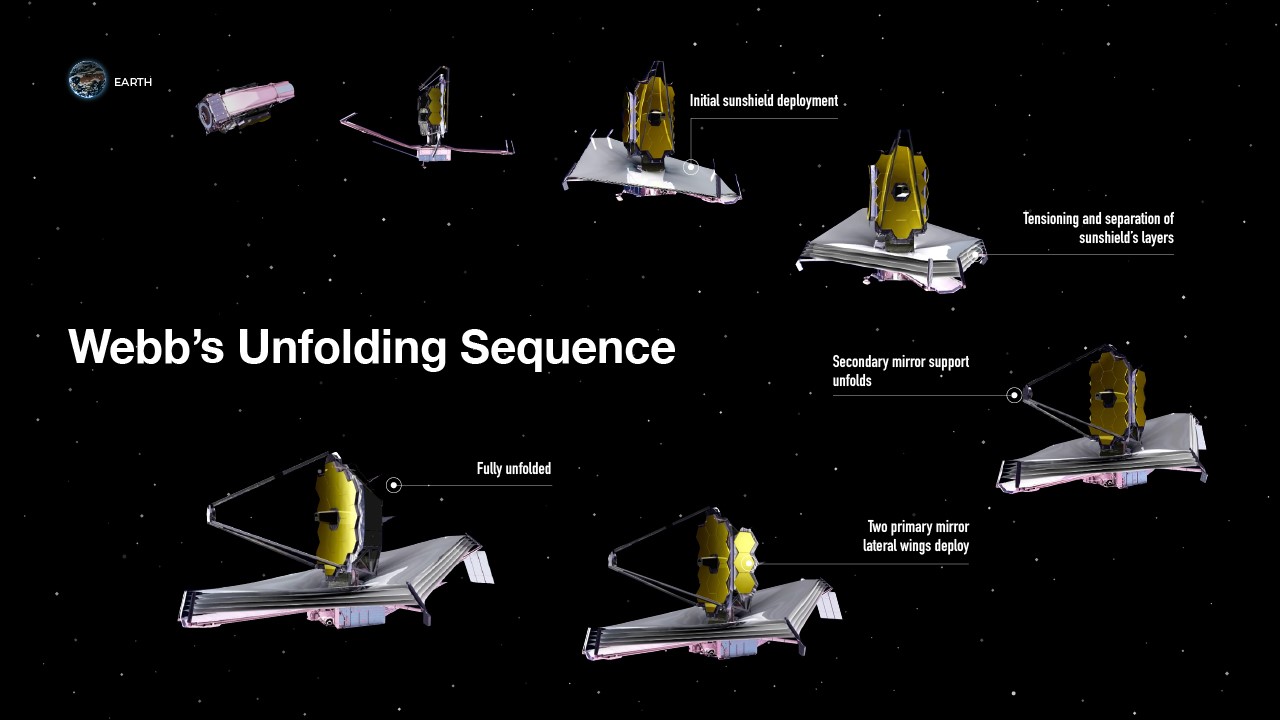
The next step is sequential deployment of the secondary and primary mirror segments starting Wed. Jan. 5 – which involve more conventional hinges and latches. But they are not considered to be as risky as the sunshield deployment which was unprecedented in scope and complexity
“The sunshield deployment certainly was the most complex in terms of moving parts all having to work in harmony,” said James Cooper, NASA’s Webb sunshield manager, based at Goddard Space Flight Center, at a Jan. 4 media briefing.
“The stuff that’s left from a deployment point of view is more conventional hinges and motors and things like that.”
The sunshield fully deployed sunshield will protect the telescope from the Sun’s radiation. It will reach a maximum of approximately 383K, approximately 230 degrees F, while keeping the instruments cold at a minimum of approximately 36K or around -394 degrees F.
“The membrane tensioning phase of sunshield deployment is especially challenging because there are complex interactions between the structures, the tensioning mechanisms, the cables and the membranes,” Cooper explained in a blog post with tensioning in progress.
“This was the hardest part to test on the ground, so it feels awesome to have everything go so well today. The Northrop and NASA team is doing great work, and we look forward to tensioning the remaining layers.”
Webb has another 5 1/2 months of setup and spacecraft and instrument commissioning still to come, including deployment of the secondary mirror and primary mirror wings, alignment of the telescope optics, and calibration of the science instruments. After that, Webb will deliver its first images.
Before the science instruments can be commissioned that also need to be completed cooled to their operating temperature which will taken about 4 and a half months, NASA Goddard told Space UpClose
This NASA video details the complex deployment sequence of JWST post launch remotely controlled from Earth:
Video Caption: Engineers on the ground will remotely orchestrate a complex sequence of deployments in the hours and days immediately after the launch of the James Webb Space Telescope. This animation shows the nominal sequence for these deployments. Music Credit: Universal Production Music “Connecting Ideas Instrumental” Credit: NASA’s Goddard Space Flight Center
The $9.8 Billion Webb observatory – intricately folded up like origami inside the nose cone – launched at 7:20 a.m. EST (9:20 a.m. GFT / 1220 GMT / 13:20 CET). Saturday, Dec. 25, on a 55 m (180 ft) tall Arianespace Ariane 5 rocket from Europe’s jungle Spaceport at the ELA-3 launch complex in Kourou, French Guiana, on the northeastern coast of South America.
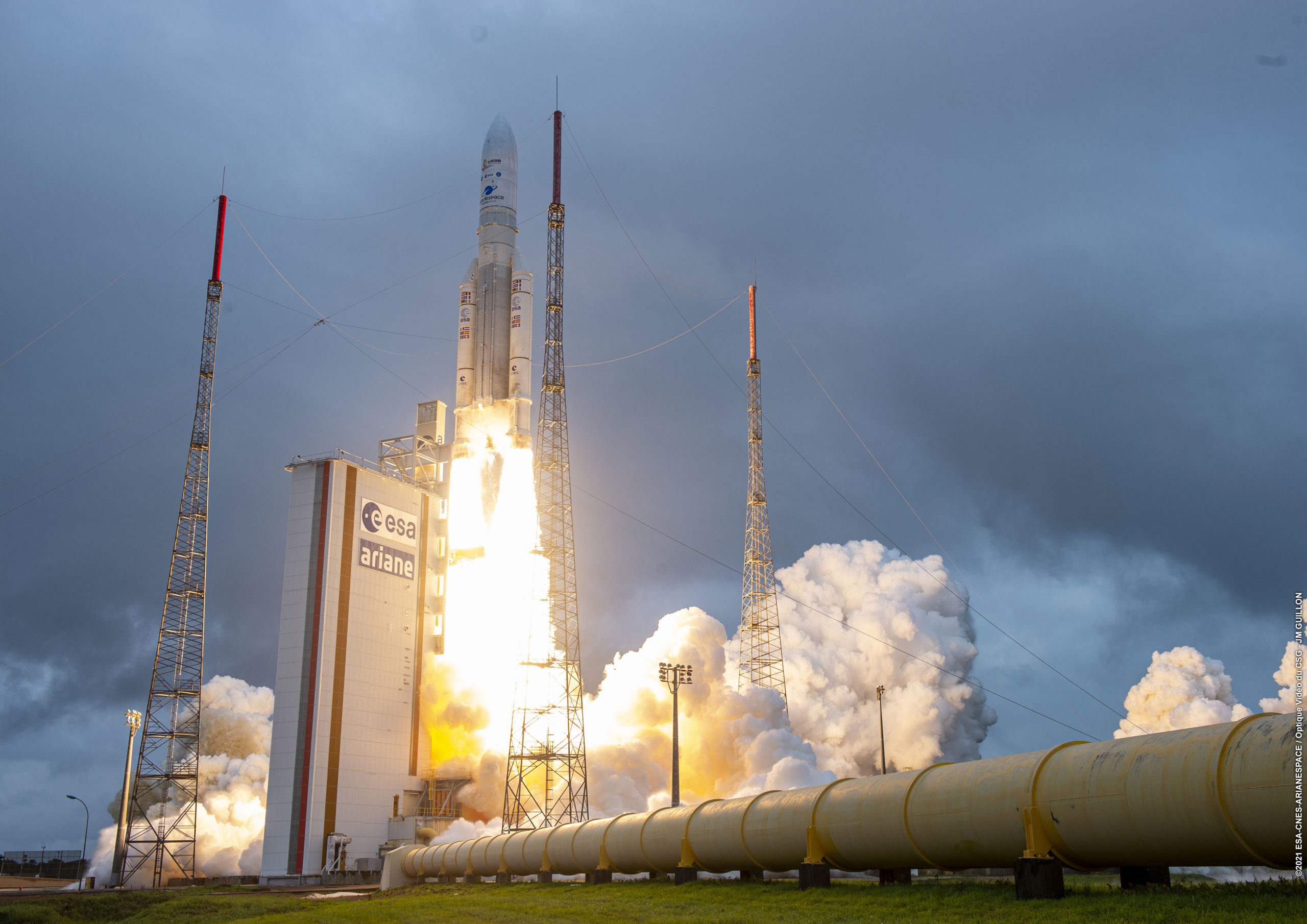
Webb is a joint effort between NASA, ESA (European Space Agency) and CSA (Canadian Space Agency).
JWST is the largest, most powerful and most complex space telescope ever built.
It is also the most expensive science instrument ever costing nearly $10 Billion
It will operate in a halo orbit at the L2 Lagrange point approx. 1 million miles (1.6 million km) from Earth after liftoff and about a 1-month journey.
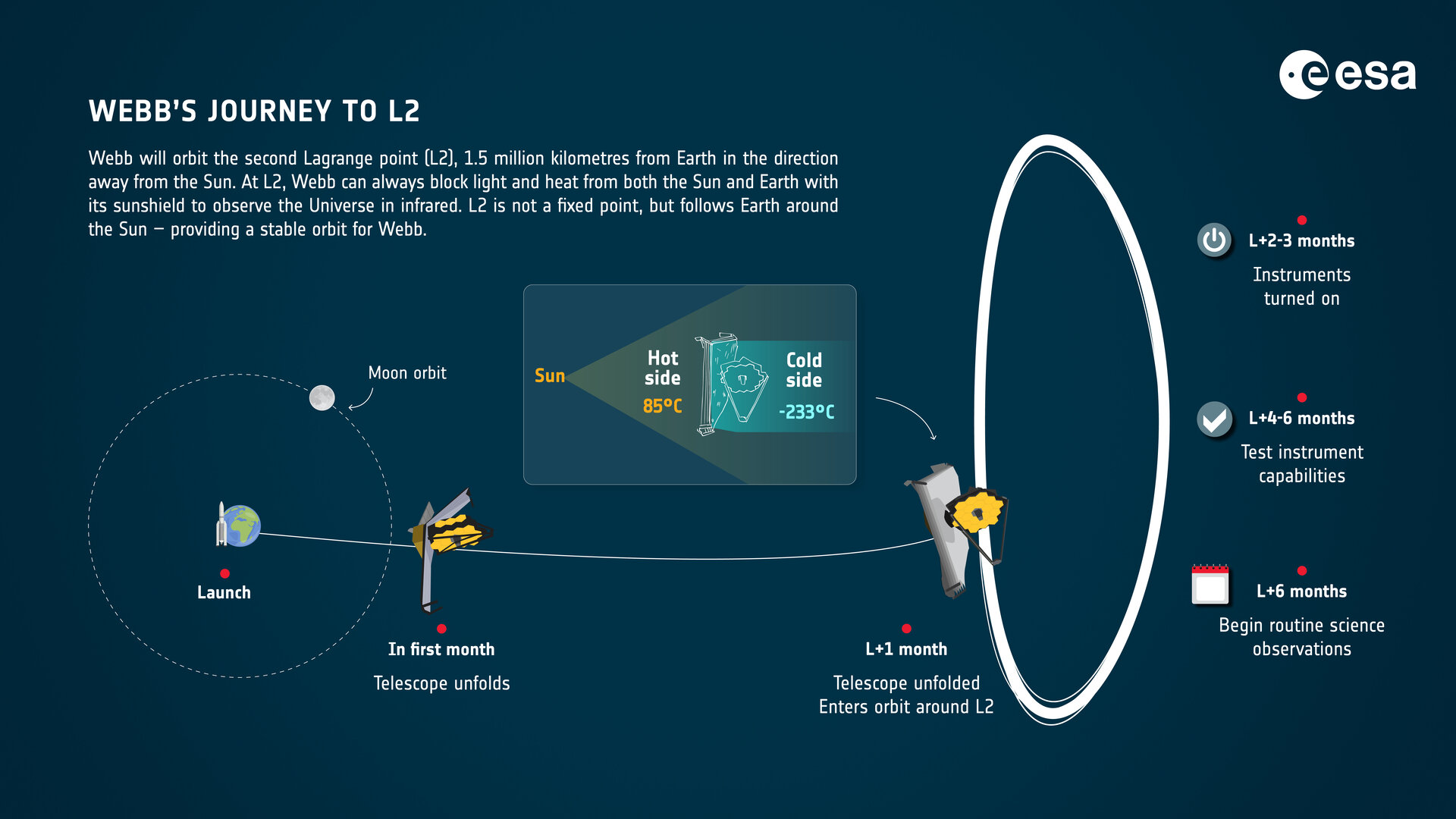
It will serve as the scientific successor to NASA’s world famous and phenomenally successful Hubble Space Telescope (HST).
“The James Webb Space Telescope represents the ambition that NASA and our partners maintain to propel us forward into the future,” said NASA Administrator Bill Nelson.
“The promise of Webb is not what we know we will discover; it’s what we don’t yet understand or can’t yet fathom about our universe. I can’t wait to see what it uncovers!”
Webb is in many respects a time machine looking back to the formation of the Universe over 13.5 Billion years ago and how we came to be and evolve over the eons.
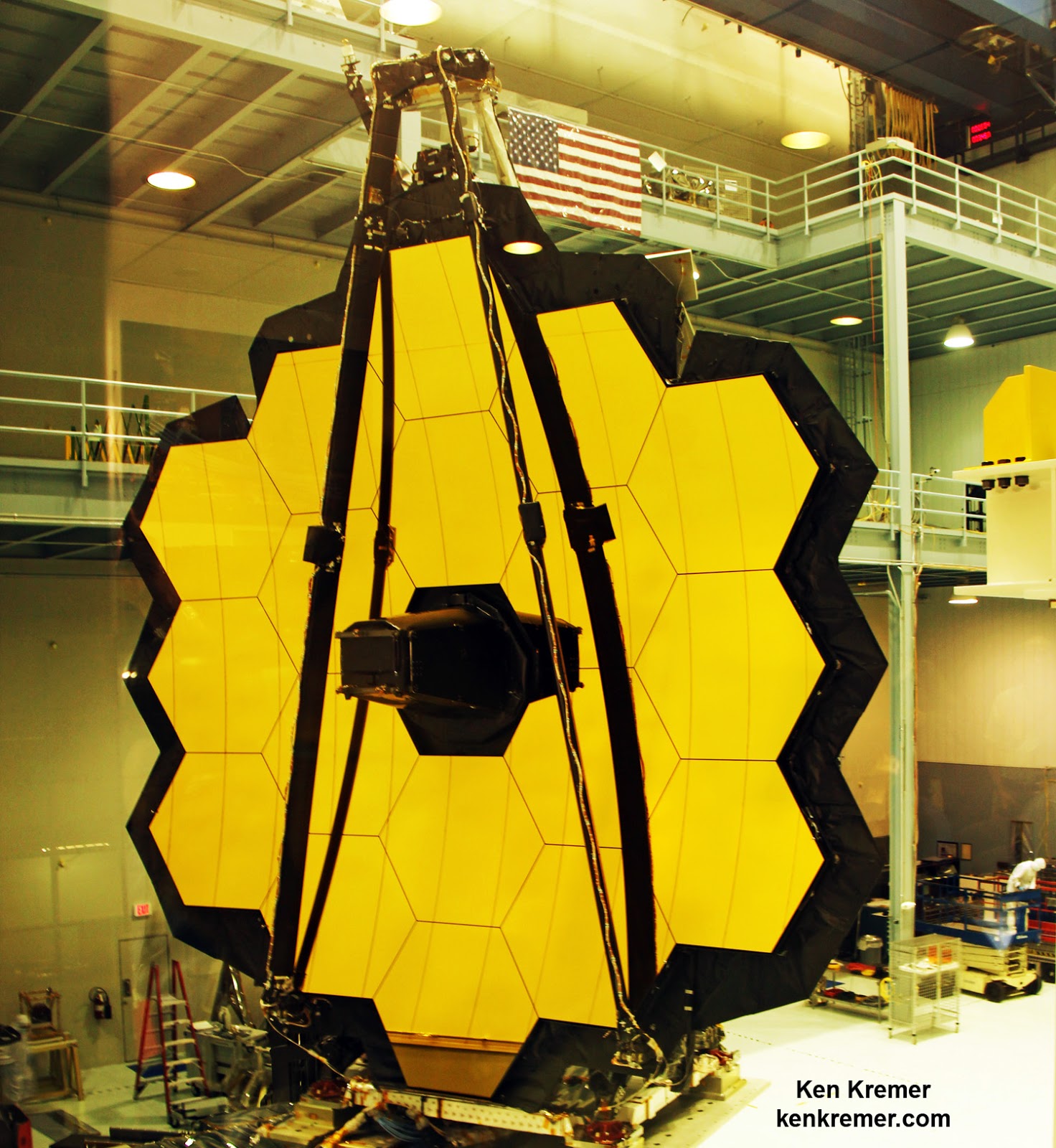
Watch this space for my ongoing reports on JWST mission and science.
Watch Ken’s continuing reports about JWST, IXPE, DART, SpaceX Crew and Cargo Dragons, Artemis, SLS, Orion and NASA missions, Lucy Asteroid mission, SpaceX Starlink, Blue Origin and Space Tourism, Commercial Crew and Starliner and Crew Dragon and onsite for live reporting of upcoming and recent SpaceX and ULA launches including Crew 1 & 2 & 3, ISS, Solar Orbiter, Mars 2020 Perseverance and Curiosity rovers, NRO spysats and national security missions and more at the Kennedy Space Center and Cape Canaveral Space Force Station.
Stay tuned here for Ken’s continuing Earth and Planetary science and human spaceflight news: www.kenkremer.com –www.spaceupclose.com – twitter @ken_kremer – email: ken at kenkremer.com
Dr. Kremer is a research scientist and journalist based in the KSC area, active in outreach and interviewed regularly on TV and radio about space topics.
………….
Ken’s photos are for sale and he is available for lectures and outreach events
Please consider supporting Ken’s work by purchasing his photos and/or donating at Patreon:
https://www.patreon.com/kenkremer
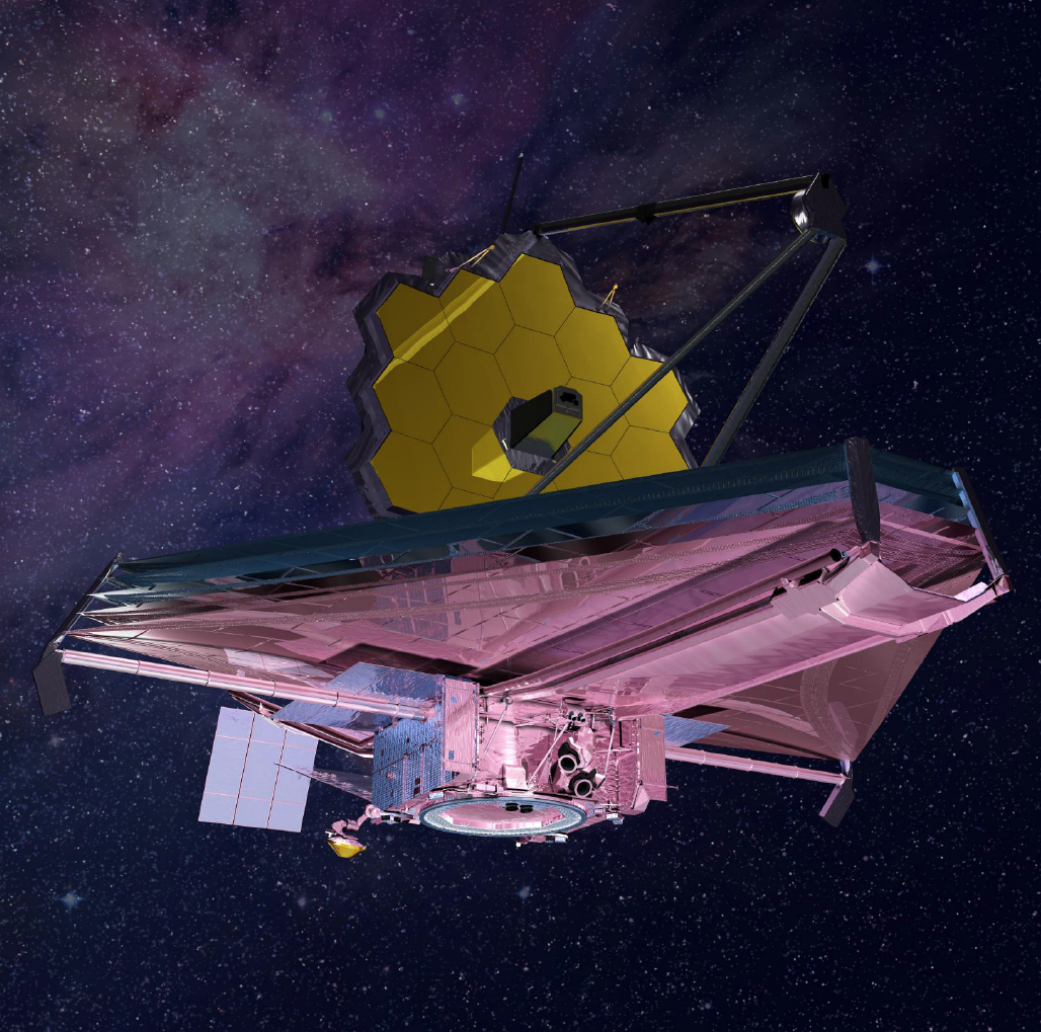
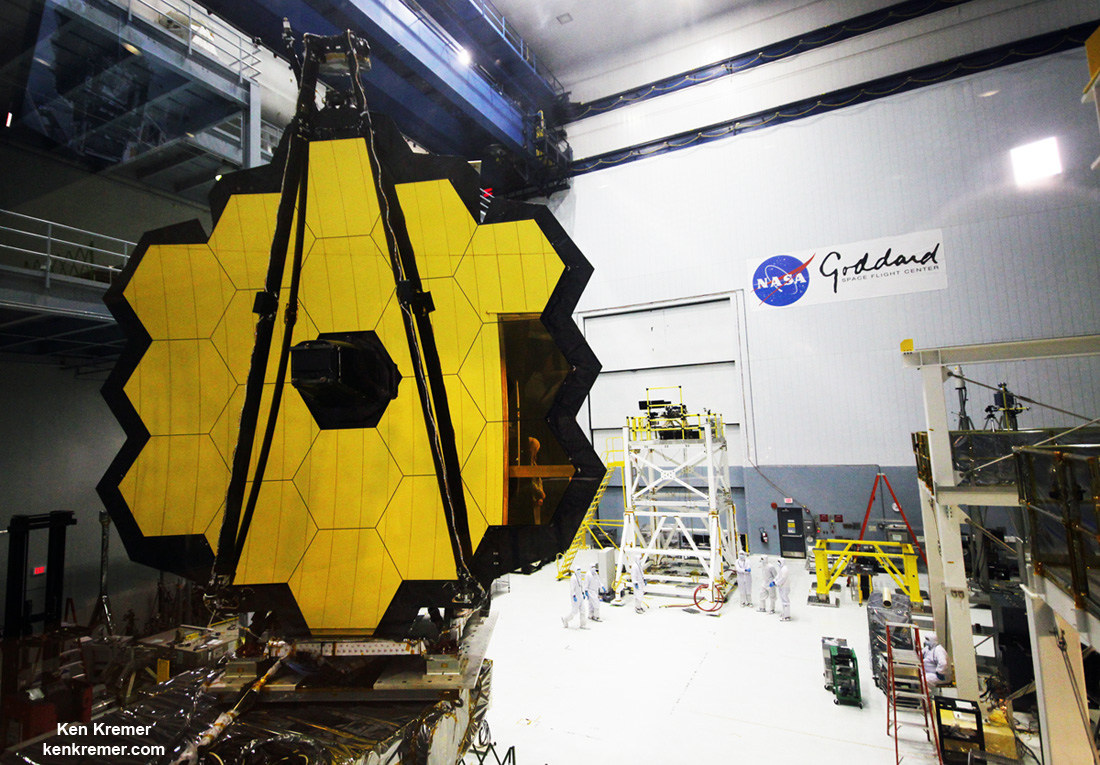
x
x


